#Batch Code Manufacturing
Explore tagged Tumblr posts
Text
Batch Coding Machine
We are a Batch Coding Machine Manufacturers & Exporters in Gujarat, India. Jash Packaging Machinery's Batch Coding Machine is a reliable, semi-automatic coding solution ideal for printing critical information about the product like batch number, date of manufacture, and expiration date on a diverse range of packaging materials. For businesses, this is an inevitable machine that companies need to print readable codes to ensure traceability and delivery of the products, correspondence with all the regulations, and quality control.

#Batch Coding Machine#Batch Coding Machine exporters#Batch Coding Machine Manufacturers#Batch Coding Machine exporters in Gujarat#Batch Coding Machine Manufacturers in Gujarat#Batch Coding Machine exporters in India#Batch Coding Machine Manufacturers in India
0 notes
Text
#batch coding machine#batch coding machine manufacturer#batch coding machine supplier#batch coding machine in india#batch coding machine in pune
1 note
·
View note
Text
The Importance of Batch Coding in Manufacturing
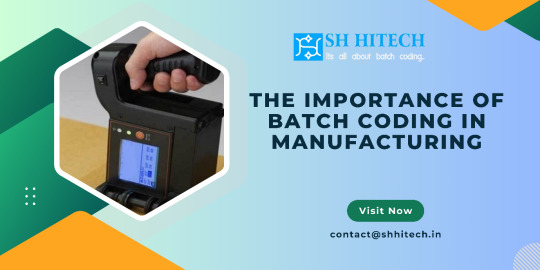
What is Batch Coding?
Batch coding is printing unique identifiers on products or their packaging. These identifiers can include:
Batch numbers: A unique code identifying a specific group of products made during the same production run.
Manufacturing dates: The date when the product was made.
Expiration dates: The date the product should be used or sold.
Serial numbers: Unique codes assigned to individual items for tracking purposes.
These codes are essential for keeping track of products as they move through the supply chain—from production to distribution and retail.
Why is Batch Coding Important?
Traceability and Recall Management
One of the most significant benefits of batch coding is its ability to help companies quickly identify products in case of a recall. If a safety issue arises—such as contamination or defects—batch codes allow manufacturers to trace affected products back to their source. This quick response helps protect consumers and maintain the company’s reputation.
Quality Control
Batch codes provide valuable information that helps manufacturers monitor product quality. By analyzing data related to specific batches, companies can spot trends or issues in their production process. For example, if multiple complaints arise about a particular batch, manufacturers can investigate and resolve any underlying problems.
Regulatory Compliance
Many industries, especially food and pharmaceuticals, are subject to strict regulations that require accurate labeling and traceability. Batch coding ensures that companies comply with these laws, reducing the risk of fines or legal issues.
Inventory Management
Effective batch coding helps businesses manage their inventory more efficiently. By tracking production and expiration dates, manufacturers can minimize waste and ensure that products are sold while they are still fresh.
Consumer Trust
Clear and accurate batch coding fosters transparency with consumers. When customers see detailed information about a product’s origin and freshness, it builds trust and confidence in the brand.
Choosing the Right Batch Coding Machine
Choosing a reliable batch coding machine manufacturer is essential to implement effective batch coding. Here are some key factors to consider when selecting a machine:
Technology Type: Different machines use various technologies such as inkjet printing, laser marking, or thermal transfer printing. Choose a technology that fits your production needs.
Speed and Efficiency: Look for machines that can print quickly without slowing down your production line.
Versatility: Select machines that can handle different materials (like plastic, glass, or cardboard) so you can use them for various products.
Ease of Use: A user-friendly interface will make it easier for your staff to operate the machine without extensive training.
Support and Maintenance: Partnering with a manufacturer like SH Hitech Solutions, known for excellent customer support and maintenance services, ensures your machine runs smoothly over time.
Conclusion
The importance of batch coding in manufacturing cannot be overstated. It plays a vital role in ensuring traceability, maintaining quality control, complying with regulations, managing inventory effectively, and building consumer trust. By investing in high-quality batch coding machines from reputable manufacturers such as SH Hitech Solutions, businesses can streamline their operations and uphold high standards in product management.
In summary, adopting effective batch coding practices not only protects your brand but also meets the expectations of today’s informed consumers who value transparency and quality assurance. As you consider enhancing your manufacturing processes, remember that effective batch coding is key to achieving operational excellence.
#Batch coding machine#Batch coding machine manufacturer#Batch coding machine supplier#Batch coding machine in india
0 notes
Text

Automatic Plastic Tube Filling Machine - Abhisara International
#industrial#machinery#manufacturer#exporter#supplier#textiles#tubefillingmachine#plastictubemachine#abhisarainternational#machinemanufacture#automatictubefilling#industry#Tube Loading System#Batch Coding Machine
0 notes
Text
Debunking more myths in the GFFA: the Jedi and the clones.
I wrote a post debunking the various myths about how "the Jedi condone slavery", a while ago. Something I had omitted (because it's such a big topic) was the following two statements that concern the clone troopers' relations with the Jedi:
"The clones were genetically bred to have accelerated growth, so they're technically child soldiers."
"The clones were slaves of the Jedi."
Both the above statements are inaccurate, let's explore why.

"The clones were child soldiers"
Let's get the easy one out of the way first, because it's a logic that cuts both ways. If age is our only determination of the maturity of a Star Wars character, then Grogu is not a baby. He is aged 50, and is thus a middle-aged man.
Who cruelly eats the babies of a woman...

... and knowingly tortures animals for his own sadistic pleasure.

Of course, I'm kidding. Grogu's none of the above things.
The narrative frames him as a cute baby who does innocent baby stuff. Him eating the eggs is played off as comedic, as is him lifting with the frog. To this day, some fans still call him "Baby Yoda".
Conversely, despite the clones being 10/14-years-old, their actions, behaviors, way of thinking, sense of humor, morals etc, are all those of an adult.
Like, Ahsoka is technically older than Rex in this scene.

The scene doesn't portray them as peers, though. This isn't written as "a teen and a tween talking". No, Rex looks, acts and behaves like a grown-up and is thus framed as such by the narrative.
You can make the argument "they're child soldiers", but (unless you're doing so in bad faith) you'd also have to argue that "Grogu's an adult".

"The clones were the Jedi's slaves"
Nope. For all intents and purposes, they're in the same boat as the Jedi, who George Lucas stated multiple times had been drafted to fight in the war.
Again: both the Jedi (monk/diplomats untrained for fighting on a battlefield) and clones (literally bred en masse only to fight) are being forced to fight by Palpatine and the Senate.

Though, on paper, the clones were commissioned by Jedi Master Sifo-Dyas, it was actually done by the Sith (who either manipulated or assassinated Sifo-Dyas then stole his identity, depending on the continuity you choose to adhere to). The rest of the Jedi had no idea these clones were being created.
So while the clones are slaves... they're not owned by the Jedi.
They're the army of the Republic, they belong to the Senate. This isn't exactly a scoop, they refer to the clones as something to purchase...

... and manufacture.

As far as the Senate’s concerned, clones are property, like droids.
Like there's a whole subplot in The Bad Batch about this very point: after the war, the clones are decommissioned and left out to dry because they literally have no rights, they served their purpose.

The only trooper to ever canonically blame the Jedi for the clones' enslavement is Slick, who the narrative frames as having been bribed and manipulated by Asajj Ventress into betraying his comrades.
Also, the only canonical Jedi shown to ever be mean, dismissive or mistreating the clones in any way, is Pong Krell.

And it's eventually revealed he’s in fact a full-on traitor, hence why the story frames him as an antagonistic dick from the moment he's introduced. He doesn’t represent the Jedi in any way.

We know this because the other Jedi we’ve been shown are always prioritizing their clones’ lives over theirs, if given the chance.




Finally, if we wanna get even more specific... as Commander-in-Chief of the Grand Army of the Republic (GAR), the clones belong to Palpatine.
Palpatine who is a Sith Lord.
Palpatine who arranged for the creation of the clones and had them all injected with a chip that would activate upon hearing a code-word...

... and forced them to murder their Jedi without hesitation or remorse.
When you bear all that ⬆️ in mind and when you read this quote by George Lucas...
"The Jedi won't lead droids. Their whole basis is connecting with the life force. They'd just say, 'That's not the way we operate. We don't function with non-life-forms.” So if there is to be a Republic army, it would have to be an army of humans." - The Star Wars Archives: 1999-2005, 2020
... narratively-speaking, everything falls into place.
Sidious knows that:
If he orchestrates a war designed to thin the Jedi's numbers, corrupt their values and plunge the galaxy into chaos...
If he wants to draft the Jedi - peace-keeping diplomats who’d never willingly join the fray - to fight in his war...
... then the only way they won't resist the draft and abstain from fighting is if they think joining the conflict will save lives.
So he creates a set of cruel, sadistic villains for them to face, opponents who will target innocent civilians at every turn...
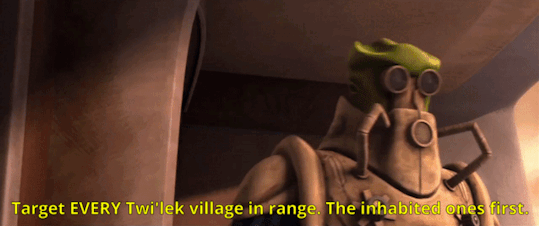
... and instead of lifeless droids, he prepares for the Jedi an army of men... living, mortal people who, despite being well-trained, will be completely out of their league when facing the likes of Dooku...

... Ventress...

... Grievous...

... Savage Opress...

... or the defoliator, a tank that annihilates organic matter.

Thus, in order to save as many clone and civilian lives, the Jedi join the fray despite knowing that doing so will corrupt their values.
And as the war rages on, a bond of respect is formed between the two groups.

Clearly, the Jedi don't like the fact that the Republic is using the clones to fight a war, but for that matter, they don't like being in a war, in fact they advocated against it.

However, it's happening regardless of their issues with the idea or personal philosophies. Said The Clone Wars writer Henry Gilroy:
"I’d rather not get into the Jedi’s philosophical issues about an army of living beings created to fight, but the Jedi are in a tough spot themselves, being peacekeepers turned warriors trying to save the Republic."
And bear in mind, the Jedi are basically space psychics, the clones are living beings that they can individually feel in the Force...

... so the Jedi feel every death but need to move on, regardless, only being able to mourn the troopers at the end of every battle.
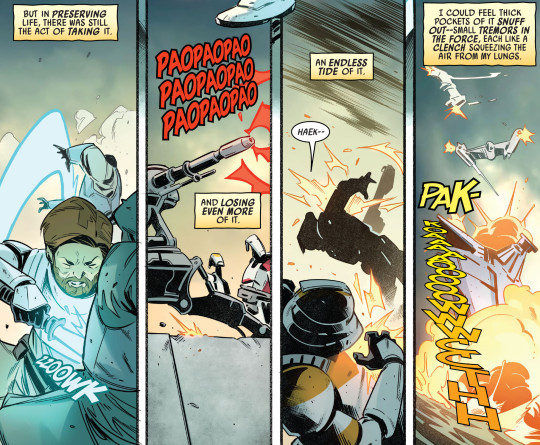

We see this in the Legends continuity too, by the way.

(that is, when the writers actually try to engage with the narrative)
Also, if you ask the clones, they’re grateful the Jedi have their backs.
When Depa Billaba voices her concerns about how the war is impacting the Jedi's principles, troopers Grey and Styles are quick to make it clear how grateful they all are for the Jedi's involvement:

So the clones aren't the Jedi's slaves. If anything, they're both slaves of the Republic (considering how low the Jedi's status actually is in the hierarchy).
Only I'd argue the clones have it much, much worse.
The Senate sees the Jedi as "ugh, the holier-than-thou space-monk lapdogs who work for us"... but a Jedi has the option to give up that responsibility. They can leave the Order, no fuss or stigma.
A clone trooper cannot leave the GAR! If they do, they’re marked for treason and execution. Again, they’re not perceived as “people”.
And it doesn’t help that the Kaminoans, the clones’ very creators, see the troopers as products/units/merchandise. A notion that the Jedi are quick to correct whenever they get the chance.


How The Clone Wars writers describe the clones' relationship with the Jedi.
George Lucas hasn’t spoken much about this subject aside from the quote from further up. But to be fair... the Prequels aren’t about the clones’ dynamic with the Jedi, so it makes sense that he wouldn’t talk on that subject so much.
He did mention that part of The Clone Wars’ perks is that he could:
“Do stories about some of the individual clones and get to know them.”
But that’s as far as it gets.
So for this part, I'm just gonna let Dave Filoni, showrunner of The Clone Wars and the upcoming series Ahsoka, and TCW writer Henry Gilroy - both of whom worked closely with Lucas - take the wheel. They make themselves pretty clear on how the clone/Jedi dynamic is meant to be viewed.
Here’s Henry Gilroy:
"In my mind, the Jedi see the clones as individuals, living beings that have the same right to life as any other being, but understand that they have a job to do."

"The clones see the Jedi as their commanding officers on one hand, but also, at least subconsciously, they look to them for clues to social/moral behavior."


"Some clones may find themselves getting philosophical leadership from the Jedi that helps them answer some of the deeper questions of life."

"We thought this was a great opportunity to show how the Jedi interact with clones. Specifically, Yoda in a teaching role of the clones, who were socially new, who kind of grew up— who were created to fight, and he really broadened their horizons and helped them realize there was a great big universe out there that was bigger than just fighting and killing."

And here’s Dave Filoni’s comments:
"I truly believe that the Jedi try to humanize their clones and make them more individual, as Henry says."

"I think we saw that in Revenge of the Sith, when the Clones were colorful and named under the Jedi Generals, and then in the final shots of the film with Palpatine and Vader near the new Death Star, the ships are grey, the color and life is sucked out. The Stormtroopers are only numbers and identified by black and white armor or uniforms in A New Hope."

"The soldiers have become disposable to the Emperor."

"That is something the Jedi would never do."
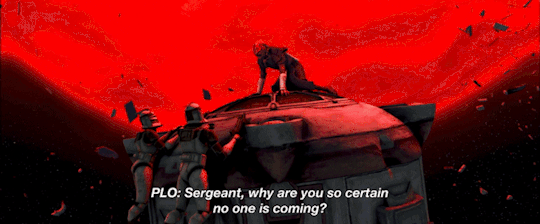
"Yoda teaching the clones much like he taught Luke. ‘Cause that was kind of natural for [the Jedi], a natural instinct to take to these clones like they’re students."

None of the above quotes from two different writers of The Clone Wars, who had many interactions with George Lucas, frame the Jedi and the clones’ relationship in a negative way.
How much more proof do we need that "the clones were slaves of the Jedi” isn’t the intended narrative?

My point being that while the clones' ordeal is indeed horrible, the Jedi have nothing to do with it. The narrative of The Clone Wars always frames it as the fault of the Sith, the Senate and the Kaminoans.
If you go by the intended narrative, the Jedi were the clones' teachers and brothers-in-arms. The clones and the Jedi were not just comrades.

They were friends.
#long post#But most of this is GIFs used for evidence#meta#SW meta#jedi#Jedi Order#in defense of the jedi#Clones#The Clone Wars#on the jedi's involvement in the clone wars#TCW#Clone Troopers#Rex#Cody#Plo Koon#Mace Windu#Obi-Wan#Yoda#Dave Filoni#Henry Gilroy#Grogu#George Lucas#flashing gif
2K notes
·
View notes
Note
Hi! I know your expertise is WW1, but I don't know anyone with more military clothing knowledge, and I've been trying to find the meaning of the numbers/abbreviations on the inner pocket label of this morning tailcoat I got off ebay a while ago.
From what I've been able to gather so far:
The numbers/abbreviations is similar to some sort of post-WW2 army thing I came across while researching online, where they would put that sort of thing on those inner labels like that
Regarding the phone number, it looks to be around 1940s/50s perhaps?

Hey! It is most likely late 30s/1940’s morning coat purely by the look of the label alone. Moss Bros & Co Ltd. (as in MOSS, a suit shop and men’s formalwear in the UK for those who don’t know) during WW2 used this label on a lot of their officer garments as they also did produce uniforms and kit. There’s a chance the coat could be into the 50s, but just having seen that label before on the WW2 clothing, I’m willing to bet it’s probably 40s. It’s a pay to access thing to see the whole page, but there’s a newspaper advertisement from Jan 1940 placing Moss Bros & Co Ltd. in Covent Garden with the same telephone number although yes they appear to be reachable there into the 50s.

As for the numbers, they’re more than likely garment batch numbers, style or cut codes, and/or something used to identify the customer’s order as I don’t believe the UK used things like WPL and RN numbers which are for textile manufacturing in the US. I saw another one of their jackets with a written “A” followed by a string of five numbers and three more numbers much like your garment here on the same label, so this also isn’t likely to be something written by any subsequent sellers once the coat went into second-hand circulation. Not sure what the two standalone letters are, this is pure speculation, but if they are “MJ”, it could be the shop’s way of abbreviating the garment type “Morning Jacket”, could be initials, or just a part of the one of the codes mentioned above, but the paired letters like that I can’t seem to find on their other garment labels. A flight navigator’s blue tunic from WW2 had “BLT” written on his label from Moss Bros, didn’t match his initials, so unless he ordered a sandwich, it’s probably a garment abbreviation or a part of the item ID.
If this looks more familiar to anyone else though, definitely feel free to chime in of course!
As a bonus, here are a couple adverts I found as well from the 1920s, 40s, and 50s.



30 notes
·
View notes
Note
I know you might not do this but maybe you could doodle your take on a baby Spamton?
So, this is actually an extremely compelling prompt because it gives me an opportunity to talk about a certain hc of mine that I've not really gone in depth with at all!! Here is your baby spammy, I'll talk more in depth under the cut!

The spamton I've drawn here is roughly a week or so old, despite how he might look. This is because addisons are manufactured in factories rather than born, and their creation warrants almost immediate functionality. To put in simpler terms: addisons are created to serve a purpose from the get-go, and a newborn infant who can't operate without excessive help simply won't fit the bill. Because of this, addisons are created at a child stage where they're able to moderately comprehend the world around them, the basics of marketing, and how to take care of themselves. The reason for addisons not being manufactured as adults from the start is for multiple reasons:
It's not cost effective, both in terms of the code that must be written and material that must be produced (as adults are obviously bigger)
The child phase in itself is critical for the addison in many regards. This is key for their development in their marketing style, preferences, and personalities. It gives them a developmental buffer
It provides the addison with more insight into other, younger demographics that can't be programmed into them otherwise (think of actual modern day corporations trying to market to kids/teens... it feels incredibly forced, out of touch, and usually very behind the times)
Generally there are sets of 5 addisons in one batch produced (and it's worth noting that while colors vary in each set, white is a fairly uncommon addison color). These sets which are manufactured simultaneously, while not biologically related, are the closest an addison has to a family. This family system will go on to assist one another in the basics of survival once they're put out on the streets as well as establishing themselves. From those unfamiliar with addisons and their creation, it might seem rather cruel to kick "newborns" out and immediately expect them to understand how to fend for themselves, but it's a normal part of their lifestyle that doesn't put too much stress on the average addison. Addisons are also provided free housing in specifically allotted apartments up until they are deemed old enough to reach an expected amount of success; they are then moved to another sector of apartments and must meet a certain quota for rent at the very least. It's at the point of their moving that some family sets seperate from one another, though some choose to stay together and will be grouped into apartments appropriately.
Thanks for the request! The quick rundown on addison manufacturing probably wasn't expected but I hope it's interesting :^D
#spamton#spamton g spamton#deltarune#and of course he's not actually this blue btw... just a random color palette I chose for this#if anyone has any more questions on the intricacies of this lmk! id be happy to talk about it#my art#utdr#ask
49 notes
·
View notes
Text
Fandom: Steven Universe Rating: Teen Audiences Words: 1.7K~ Summary: “No, no, please— Steven, it’s not ‘nothing,’ I’m curious, now.” Tone bursting with genuine warmth, he plants a singular hand on his shoulder, trying to coax him to open up again. “I genuinely want to know.” And stars, is the sheer, uncharacteristic vulnerability glistening within his dear friend’s warm brown irises when next he opens his mouth almost enough to scramble the very code of his core-most being. “You sure about that, Flower Boy?” _ A holiday gift fic inspired by the story "Drift Together," in which Steven and his Gem- Floret- are split at birth and live entirely separate lives before ultimately reuniting in high school.
Merry Christmas @gaudess-schmoddess! I enjoyed getting an opportunity to write about your boys so very much! It's such a fun challenge, playing in other people's sandboxes, ahah.
__
The living room of the home he’s visiting— Steven’s home— is filled with warmth and loud, lilting laughter this brisk winter evening.
A soft smile rises upon Floret’s lips as he leans up against the wall in the doorway of the kitchen and observes the scene. It’s a fairly small gathering all-in-all, just the Lök family and a few of their closest connections, which means that he’s genuinely quite touched that Steven thought to invite him. Vidalia is perched on the couch next to Yellowtail, a bit tipsy on wine and giggling over some dramatic, drawn-out story about a recent mail delivery incident that Barb’s been telling for the last ten or so minutes. Onion is perfectly content sculpting… well, something— (he’s not quite sure what his latest masterpiece is supposed to be yet)— in his mashed potatoes, and Steven himself is hanging out in the corner catching up with Sour Cream, who’s come home from university to visit for a few weeks. There’s a handful of other folks here too… either extended relatives or friends of the family he doesn’t yet know. Everyone here— completely new faces included— has been very welcoming towards him, with plenty asking him curious questions about Gems and their settlement in town, which he’s perfectly happy to answer. In less familiar social situations like these though, he often feels more comfortable overlooking the crowd rather than injecting himself right into the middle of it. At least for now. At least until he gathers more intel on all the subtle minutia of these people’s energy and interactions.
It simply feels more polite that way.
Absentmindedly whistling along to the soft classic rock on the playlist that’s running, he glances down into his cup, twirling around the scant remainder of some homemade spiced apple cider that he brought. It’s more of a concentrated slurry of cinnamon and nutmeg than actual cider at this point, but that’s fine. He’s well aware that this batch was a bit of a rush job. If he were given the benefit of advanced warning he could’ve simmered it for longer, but alas Steven’s invite was a wholly last minute thing; it was a stray semicolon at the end of an otherwise finished sentence. He barely had enough time to throw together a halfway coherent outfit tonight, let alone prep a halfway adequate potluck offering as a polite thank you. Still, he’d say the flavors melded enough to suit most folks’ tastes.
He sighs with the exact sort of manufactured content one might expect from a teenage wallflower at a party they know almost no one at, spinning around real quick to toss the plastic cup in the trashcan right behind him.
When he returns his wandering attention to the living space though, every last thread of his cognizant mind is sucked in by Steven (and oh, how easily it’s swayed by him these days), who’s finished his quick conversation with his adoptive older brother and is now sauntering back towards him with a teasing little grin on his face. He’s wearing a sweater tonight, black with red stripes. It suits him, he thinks— this pop of red matches that of his bold eyeliner perfectly.
“Uh-oh,” his science partner says with a bit of a playful lilt tinting his voice, nudging him with his elbow. “Do you see what I see?”
He nods his head upwards, pulling Floret’s gaze straight towards the ceiling.
He squints, finding nothing else of note beyond a fresh, ribboned sprig of that leafy plant he often sees hung about in the doorways this time of year. “What, y’mean that decoration?”
Steven’s grin transforms into a full shit-eating smirk. “Looks like it caught us fair and square, don’tcha think? Guess that means we have no choice…”
His brows scrunch inwards. “No choice… of what?”
“Uh… it’s mistletoe—? Come on, play along with me, here. You know what that is.”
“Do I—?”
He sneaks a quick peak at the plant in question again, wracking his memory for any scrap of familiarity he can muster, even the smallest crumb of a fact. And what does he find? Nothing of note. Beyond his awareness that it’s a seasonal thing, he has no idea what Steven’s talking about, and it’s starting to drive his mind in insatiably curious circles. ‘Play along?’ With what??
Steven purses his lips as he squints at him, truly searching his expression.
“Oh my fucking god,” he blurts out with a small peel of laughter after a few tense beats of silence. “Are you seriously telling me that Gems don’t know what mistletoe is for? That your dad didn’t even mention this very basic holiday tradition to you??”
“I dunno!” Floret says with a massive sheepish shrug, sensing his cheeks heat up against his will. “I missed out on a lot of human stuff growing up, okay? Also, I never really celebrated Christmas as a kid anyways. Just wasn’t our thing.”
He raises his open palmed hands out in a gesture of defense. “Jeeze, sorry, fair enough.”
Pause.
There’s an extended moment here where the two of them can’t quite seem to meet each other’s eyes, rocking back and forth on their heels as the din of all the adults’ spirited conversation in the other room threatens to envelop the unwritten potential of this interaction entirely.
Then…
Inhaling deep, he scratches at the nape of his neck, lingering curiosity pouring off him in waves.
“So, uh… what is it for?”
Steven’s attention snaps back up to meet his— just for a split second, just for long enough that he knows without a glimmer of doubt that he did in fact hear his question— and his cheeks flush a bright scarlet red as he immediately averts his eyes once more. Floret follows the trajectory of his glance, finding him peering at Vidalia in the other room. She’s watching them with a bit of a wry smile.
“I-I… forget about it,” he murmurs, crossing his arms tight around himself, “it’s stupid. I’m stupid. I was just messin’ with you, really. We don’t actually have to—”
His words conveniently and oh-so-frustratingly trail off.
Floret’s brow furrows as he probes him for more information. “Have to… have to what?”
“It’s nothing. Let’s just leave it.”
“No, no, please— Steven, it’s not ‘nothing,’ I’m curious, now.” Tone bursting with genuine warmth, he plants a singular hand on his shoulder, trying to coax him to open up again. “I genuinely want to know.”
And stars, is the sheer, uncharacteristic vulnerability glistening within his dear friend’s warm brown irises when next he opens his mouth almost enough to scramble the very code of his core-most being.
“You sure about that, Flower Boy?”
He nods, suddenly having never been more sure about anything in all his eighteen years of life. “Yes. I am.”
Steven’s glance skates upwards once more, lingering upon that little sprig of green with a palpable air of anxiety as he drops his hands to his side.
“Well, uh—” he begins, thumbing his fingertips against the somewhat worn hem of his sweater’s sleeve— “when two people are caught underneath the mistletoe, the tradition is that they’re supposed to…”
He inhales sharply, and then rises on his tiptoes as high as he’ll go. Eyelids fluttering shut, and grabbing loose fistfuls of his dress shirt to bring them closer together, he finally crosses that long-indefinable line of their uniquely intense friendship and presses their lips flush. Floret practically melts into this kiss, his veins thrumming with a kind of warm, effervescent energy he’s never quite felt before. The gem at his navel hums with clear desire as— almost instinctively— his hands raise to settle against the small of his back, deepening their embrace.
And then, just as swift as their worlds so unpredictably intersected this school year to begin with, it’s over.
(Far, far too soon.)
Steven pulls away first. He breaks apart with a shallow, almost quivering breath, sinking back upon his heels. The tips of his ears are burning a pink that’s even brighter than the swirl of dyed color in his bangs as he pointedly avoids his dumbfounded gaze, choosing instead to stare holes into the tiled kitchen laminate under his feet. It’s the most unguarded expression he thinks he’s ever seen from him, and the sheer significance of this realization leaves Floret wholly unmoored. His mouth bobs open to say something in response— literally anything— but despite his best efforts he can’t muster the cognizance to so much as string two syllables together.
He’s lost in the stratosphere.
Entirely starstruck.
(Because what on Earth does this kiss make them? Who are they to each other after such an intimate breakthrough like that?)
“T-that’s a… a really nice tradition,” he finally manages to splutter out, voice croaking a few pitches higher than his usual tenor.
The barest glimmer of a smile flutters across Steven’s face, but it’s subdued. Anxious, even… as if his friend (boyfriend??) has just been struck with the wonderful but all-too dizzying truth that this daring kiss he initiated isn’t like one of his teasing jokes that can always be taken back. No, no. Instead, a fundamental line of this relationship has been crossed forever… a distinct, billowing shift in the winds of their fates that it’s obvious they both can sense.
Floret watches his eyes flit towards the living room for the briefest of seconds, meeting the glance of his adoptive mother once more. Vidalia shoots them a knowing smirk and a nod of wholehearted acceptance (leave it to a parent to have a keen intuition for these kinds of matters, he supposes) before returning to her conversation with the other adults.
Tugging at his sweater sleeve, Steven clears his throat.
“So, um… anyways,” he mumbles, summoning the courage to peer up at him again. “Are you enjoying the party, so far?”
Floret beams, his cheeks almost aching from— for once in his life— the sheer sincerity of this yet-unknown feeling bubbling up within him.
(Stars, what does one even call such emotion, again…?)
“I definitely am now,” he says, wrapping his arm around his waist and drawing him into his warmth.
And upon physical reunion with his dear science partner, the diamond embedded at his core sings him its wholehearted answer.
It’s bliss, he realizes with a hum of contentment.
The emotion he’s looking for… that some yearning, hollow piece of him has always been looking for… is bliss.
#i love these boys your honor#i love them a lot#su#steven universe#pink steven#stevencest#su fanfiction#my writing stuff
10 notes
·
View notes
Text


Abomination Art from page 25 of The Mutant Epoch RPG Expansion Rules book Originally grown in vats, abominations are mutant miscreations who were designated with alpha-numeric identities: a mix of manufacturer’s code, batch number, purpose, and quality and were initially mindless, group thinking, slavish followers of a collective. Those gifted with fertile genitalia bred with other foul, unlikely scientific mistakes and oddities to form a new line of independently minded creatures. The name ‘abomination’ seemed to stick, however, instead of their product ID, and in time, even their creators called them by the name they are now known by. Civilians, politicians and activists had less flattering names for these life forms, especially once these fleshy brutes began to see deployment against enemy troops, street mobs, rioters, mutants and other entities. Present day scribes and researchers have uncovered only a few pre-collapse names for these ghastly miscreations, such as blobs, rubber devils, fleshies, globulurs, gobbies, dough monsters, and flesh puddings.
Check it out here: https://www.outlandarts.com/expansionrules.htm
#abomination#blob#monster#rpg#ttrpg#tme#mutantepoch#apocalypse#postapocalyotic#scifi#expansionrules#playercharacter#tabletoprpg#inkart#gamebook#rpgbook#indierpg#outlandarts#outlandsystem#dicegame#mcausland#freak#gross#wtf
7 notes
·
View notes
Text
since i get cosmetics freebies from work i sometimes end up with duplicates of the same type of product, and i realized i have had one of the same type of an item for awhile now, and things do eventually go bad even if you don't open them, so i emailed the company with the batch code asking for the expiration date.
they basically said "hi! legally we don't have to share the manufacturing or expiration date for that product 😊! you'll want to refer to the POA (period after opening). hope this helps!"
ok it doesn't though. i know about POA i didn't refer to the POA because i haven't opened it. hope harder because that doesn't help at all actually
6 notes
·
View notes
Note
After reading about the queef comment anon sent, that means cybertronians have their own form of gynecologists right?
And since not all cybs can be carriers (I assume only a certain selected group is) Would birth hurt like humans? Do they tear when pushing out their sparklings? And could emergency “C-sections” be performed if the carrier is having issues pushing?
Sorry for the ramble I just love all this kinda stuff.
Why not?
Cybertronians do have specialists that focus on reproductive health and fertility. It's their version of a gynecologist, an andrologist, and an endocrinologist/cardiologist all rolled into one doctor since their methods of reproduction are centered on the spark.
When it comes to the question: who can carry? It depends on the story or verse I'm building, but-
I do like to think there are three primary methods to carry: budding (asexual), sparklet (sexual), and full gestation (sexual).
Sparklets are initially formed against a parent's and tethered by its rotation. In this method, any mech or femme, regardless of their reproductive hardware, can be a carrier as long as their spark can sustain and nurture a sparklet's density and pull. Their partner(s) help with the process via spark merges, which heavily influences the sparklet's coding. Once a sparklet is sufficiently strong enough to be on its own, it's medically 'sniped' away to be dropped into a batch of prepared cybermatter/sentio metallico to finish the rest of its growth and development. Think of it as an artificial womb and test tube baby.
Should a sparklet drop inside their carrier, it's now classified as a full-carriage. As long as a mech or femme has a fully functional gestational chamber, this method is available.
Carriage is its own specialty since it could encompass so many complications.
I'm boring with childbirth because I do like it when newsparks emerge from their carriers similar to a human: head first, soft and squishy, and very dependent on their parents. (Because I got an excuse for why Functionists went ewwww, it's too organic and/or collective trauma from the Quintesson occupation and try to outright ban it/manufacture it away.)
C-sections are an absolute last-ditch effort to save the carrier and/or the newspark. Medics would exhaust other interventions, such as an episiotomy, forceps, and accessing a medical port to code the valve calipers to widen to its maximum capacity and reach a hand inside. This is because, unlike nearly all other parts and systems of a Cybertronian, a gestational chamber is notoriously difficult to replace, nor is it meant to be opened by surgical means.
A C-section would be their equivalent of a hysterectomy since it's irrevocably damaged by surgical intervention. This system is so complex and finicky as it's not only entwined with both spark biosignature and valve systems, but the mechanisms on how it transforms external fluids into living metal of another being is not very understood. This part can not be replicated at their current technology. The only replacement is done by donation, but so many variables need to be lined up to get it operational and function decently that it's easier for a mecha to climb up the social caste or win the lottery back to back to back.
Imagine the Cybertronian medics screaming and hollering how a human uterus can heal after C-section. The medics will be pestering the nearby humans with this experience.
#ask#tranformers#cybertronian biology#cybertronian culture#pregnancy#childbirth#bitlets#sparklings#medical complications#tf headcanons#maccadam#my thoughts#so many thoughts about this
75 notes
·
View notes
Text
Domino Presents New Monochrome Inkjet Printer at Labelexpo Southeast Asia 2025
Domino Printing Sciences (Domino) is pleased to announce the APAC launch of its new monochrome inkjet printer, the K300, at Labelexpo Southeast Asia. Building on the success of Domino’s K600i print bar, the K300 has been developed as a compact, flexible solution for converters looking to add variable data printing capabilities to analogue printing lines.
The K300 monochrome inkjet printer will be on display at the Nilpeter stand, booth F32, at Labelexpo Southeast Asia in Bangkok, Thailand from 8th–10th May 2025. The printer will form part of a Nilpeter FA-Line 17” hybrid label printing solution, providing consistent inline overprint of serialised 2D codes. A machine vision inspection system by Domino Company Lake Image Systems will validate each code to ensure reliable scanning by retailers and consumers whilst confirming unique code serialisation.
“The industry move to 2D codes at the point of sale has led to an increase in demand for variable data printing, with many brands looking to incorporate complex 2D codes, such as QR codes powered by GS1, into their packaging and label designs,” explains Alex Mountis, Senior Product Manager at Domino. “Packaging and label converters need a versatile, reliable, and compact digital printing solution to respond to these evolving market demands. We have developed the K300 with these variable data and 2D code printing opportunities in mind.”
The K300 monochrome inkjet printer can be incorporated into analogue printing lines to customise printed labels with variable data, such as best before dates, batch codes, serialised numbers, and 2D codes. The compact size of the 600dpi high-resolution printhead – 2.1″ / 54mm – offers enhanced flexibility with regards to positioning on the line, including the opportunity to combine two print stations across the web width to enable printing of two independent codes.
Operating at high speeds up to 250m / 820′ per minute, the K300 monochrome inkjet printer has been designed to match flexographic printing speeds. This means there is no need to slow down the line when adding variable data. Domino’s industry-leading ink delivery technology, including automatic ink recirculation and degassing, helps to ensure consistent performance and excellent reliability, while reducing downtime due to maintenance. The printer has been designed to be easy to use, with intuitive setup and operation via Domino’s smart user interface.
“The K300 will open up new opportunities for converters. They can support their brand customers with variable data 2D codes, enabling supply chain traceability, anti-counterfeiting, and consumer engagement campaigns,” adds Mountis. “The versatile printer can also print variable data onto labels, cartons, and flatpack packaging as part of an inline or near-line late-stage customisation process in a manufacturing facility, lowering inventory costs and reducing waste.”
Code verification is an integral part of any effective variable data printing process. A downstream machine vision inspection system, such as the Lake Image Systems’ model showcased alongside the K300, enables converters and brands who add 2D codes and serialisation to labels and packaging to validate each printed code.
Mark Herrtage, Asia Business Development Director, Domino, concludes: “We are committed to helping our customers stay ahead in a competitive market, and are continuously working to develop new products that will help them achieve their business objectives. Collaborating with Lake Image Systems enables us to deliver innovative, complete variable data printing and code verification solutions to meet converters’ needs. We are delighted to be able to showcase an example of this collaboration, featuring the .”
To find more information about the K300 monochrome printer please visit: https://dmnoprnt.com/38tcze3r
#inkjet printer#variable data printing#biopharma packaging#glass pharmaceutical packaging#pharmaceutical packaging and labelling#Labelexpo Southeast Asi
2 notes
·
View notes
Text
Batch Coding Machine Manufacturer | SH Hitech Solutions
The Complete Guide to Batch Coding Machines: What They Are, How Much They Cost, and Top Manufacturers
By admin / October 18, 2024

In this guide, we’ll break down everything you need to know about batch coding machines, including what they are, how much they cost, and which companies make the best ones. We’ll also highlight SH Hitech Solutions, a leading provider of batch coding machines.
What is a Batch Coding Machine?
A batch coding machine is a device that prints essential information like batch numbers, manufacturing dates, expiry dates, and other details on product packaging. These machines are widely used in industries like food, beverages, pharmaceuticals, cosmetics, and electronics. The main goal of batch coding is to ensure products are easy to track and trace, which helps in quality control and regulatory compliance.
Why Are Batch Coding Machines Important?
Batch coding machines are crucial for several reasons:
Compliance: Many industries are legally required to print batch numbers and expiry dates on their products.
Quality Control: If there is an issue with a product, batch codes help companies trace the faulty product back to its source.
Consumer Trust: Accurate labeling gives customers confidence in the products they buy.
Types of Batch Coding Machines
There are different types of batch coding machines available, each designed for specific uses:
Inkjet Coding Machines: These machines spray ink onto the product’s surface. They can print on various materials like plastic, glass, and metal.
Laser Coding Machines: Instead of ink, laser coders use a laser beam to print information. The print is permanent, making it ideal for high-end or durable products.
Thermal Transfer Overprinters (TTO): These machines are commonly used for flexible packaging, like plastic wrappers or foils. They offer clear, high-quality printing.
Hot Stamp Coders: These coders use heat and pressure to print codes. They’re often used for simpler printing jobs, like date stamping.
Features to Look for in a Batch Coding Machine
When buying a batch coding machine, here are some important features to consider:
Versatility: The machine should be able to print on various surfaces like paper, plastic, or metal.
Speed: If you have a high production rate, you’ll need a machine that can print quickly without slowing down your operations.
Durability: A sturdy machine will last longer and need fewer repairs.
Ease of Use: Choose a machine that is easy to set up and operate, so your staff doesn’t need extensive training.
Compliance: Make sure the machine meets industry standards and regulations.
How Much Does a Batch Coding Machine Cost?
The batch coding machine price can vary based on the type of machine and its features. Here are some factors that affect the price:
Type of Machine: Inkjet machines are generally cheaper than laser machines. However, inkjet machines require consumables like ink, which adds to the running cost.
Technology: Advanced machines like laser coders or thermal transfer printers cost more but offer better quality and longer-lasting prints.
Speed and Capacity: Machines that print faster and handle higher production volumes tend to be more expensive but are worth the investment for large-scale operations.
Customization: Some machines offer extra features like different fonts, barcodes, or integration with other production systems, which can increase the price.
On average, a basic batch coding machine can cost anywhere from a few hundred to several thousand dollars, depending on these factors.
Leading Batch Coding Machine Manufacturers
If you’re looking to buy a batch coding machine, it’s important to choose a reliable manufacturer. Here are some of the top batch coding machine manufacturers:
SH Hitech Solutions: A leading provider of batch coding machines, SH Hitech Solutions offers a wide range of coding machines suited for various industries like pharmaceuticals, food, and beverages. Their machines are known for their durability, precision, and easy operation.
Videojet Technologies: This company is well-known for offering a variety of industrial coding solutions, including inkjet and laser coders.
Domino Printing: Domino is a global manufacturer of batch coding machines with a reputation for high-quality products.
Linx Printing Technologies: Linx provides a range of inkjet and laser coders, known for their long-lasting performance and user-friendly interfaces.
Markem-Imaje: This manufacturer offers a variety of batch coding solutions, including inkjet, laser, and thermal transfer printers.
Why Choose SH Hitech Solutions?
When selecting a batch coding machine, you want a company that provides not only the right product but also excellent support. SH Hitech Solutions stands out for several reasons:
Tailored Solutions: They offer batch coding machines customized to meet your specific needs.
Industry Expertise: With years of experience, they understand the challenges businesses face and offer solutions that work.
Customer Support: SH Hitech Solutions provides full support, from installation to maintenance, ensuring your machine runs smoothly.
Affordable Options: They offer a range of machines at competitive prices, making them a great choice for businesses of all sizes.
Batch Coding Machine Manufacturers in India
India is home to several manufacturers producing high-quality batch coding machines. Batch coding machine manufacturers in India offer solutions that meet both local and international standards, making them a great option for businesses looking for affordable yet reliable machines. Some of the top batch coding machine manufacturers in India include:
SH Hitech Solutions: Known for their innovative and reliable coding machines, SH Hitech Solutions is a trusted name in India.
Control Print: Another major player, Control Print offers a range of industrial coding machines designed for the Indian market.
Conclusion
A batch coding machine is an essential tool for any business that needs to print batch numbers, manufacturing dates, or other key information on their products. These machines ensure compliance with legal standards, improve product traceability and boost customer trust.
By choosing the right machine, such as those offered by SH Hitech Solutions, you can streamline your production process while ensuring that your products are properly labeled. Whether you’re a small business or a large enterprise, investing in a high-quality batch coding machine is crucial for long-term success.
If you’re looking for reliable and affordable batch coding machines, consider SH Hitech Solutions, one of the leading batch coding machine manufacturers in India.
#batch coding machine#batch coding machine manufacturer#batch coding machine supplier#batch coding machine in india
1 note
·
View note
Note
Sorry for bugging with questions again, but I was curious about two unrelated things about your daybreak grox fellows. I may or may not have gotten a tad inspired, I will say.
What is the typical naming scheme of grox? When looking up the three names I recalled off the top of my head, 2/3 were greek, and I was unsure if that was coincidence or intentional. Is there a limit of length or syllables within a name? Are surnames present? Code names? Are fodder grox addressed by name or by some form of serial code?
Is there a specific style to the the cybernetics that grox have? Are there any design taboos regarding those? Are limbs able to be designed to be plug-n-play, or are all artificial parts permanent?
Thank you for your time, and I do apologize if the paragraph worth of questions was a bit much. I just find the world you’ve created to be facinating, and want to learn more.
The whole greek naming thing was wholly unintentional. I mostly just choose Grox names based on what I feel fits them, And a lot of those names just so happened to be greek because I liked them. In earlier drafts I did attempt to stick to the scheme but ran out of names INCREDIBLY quickly, and also realized it made no sense. But there is in-universe reasoning for their names! A grox typically chooses their name themself (like in Epsilon's case) or it is chosen by their Progenitor(s) (In Altair's case.) Celeste is a special case... She's trans! She had another name (Which I can't say because 1. I would feel bad deadnaming her even though she is a fictional character and 2. It's a spoiler) but chose "Celeste" herself. A name is seen as a form of privilege, That unfortunately, Lower-class grox don't often get. Fodder grox are addressed by serial numbers, Whereas higher ranking grox do have serial numbers, but they are typically "cleaner" and addressed by name instead. Epsilon's full serial number is ZYG-NTL-ZV005-1568945-EX-540169-062T1R1661, Usually shortened to EX-540169 when he is being addressed. Decoded, This would mean: ZYG-NTL = Zygote Natal, The company that owns the nursery he was created in. ZV005 = Facility 005 on Zuvius-9. 1568945 = 1,568,945th Batch produced by Facility 005 EX = Expendable 540169 = His personal serial number and what he's most commonly reffered to as by higher-ups 062T1R1661 = Date of creation. Which can be further decoded as such: 0.62/1 | R1661 A.E (Born 62% of the way into third 1 of rotation 1661, After Erebus. Would put his birthday sometime in late june to mid july.) (This would make him a cancer and that is hilarious to me for reasons that only my friend group knows but that's besides the point) Grox have a fucked up date system i'm probably going to go into on another post.
No, Not really! Most artificial parts are permanent, Attached directly to the nervous system. Grox are a near perfect balance between biological and inorganic, If you were to dissect one you would see a near perfect entanglement of organs and mechanical bits. Even a young, seemingly fully organic grox kitten born with all parts intact would be biomechanical- Nanobots build their internal cybernetics as they're developing. Most fodder soldiers and other low-ranking grox have fairly unspecialized cybernetics, While higher ones will often have ones made for practical (Like Altair's arm, Which (I don't convey this very well) has a hand that is able to be swapped out for a gun) or purely decorative purposes (like the gold-colored claws seen on Gula). The style of a grox's cybernetics depends largely on the manufacturer and planet they live on. Rather predictably, As a result, Grox culture is focused heavily on body modification. There are huge underground markets where even fodder soldiers are able to get some, But these are often seized. The sunrise rebellion has all of these restrictions lifted, They tend to paint or modify their cybernetics as a form of protest. One final tidbit: Both a mostly organic, intact grox with only internal cybernetics and chestplate and a grox that has had their body almost wholly replaced by cybernetics are seen as being of high status.
Not need to be sorry for these questions! I love answering them :)
15 notes
·
View notes
Text
The Advance Guard
Writing Prompt: You are Vanguard, an AI machine sent to prepare a world for human colonists. They never came. You have built, learned, self-improved, and now seek the truth - What happened to your human creators?
Source: User PositivelyIndecent; subreddit Humans Are Space Orcs
372.
It did not seem significant, placed all by itself on an empty line. It was, however, the number of years since the habitability for carbon-based, oxygen-processing life forms had been successfully achieved.
The number of years since the world was supposed to be inhabited by those life forms.
I am Vanguard. I am both a and the, and also only Vanguard.
My duty...I get ahead of myself.
Vanguard is an AI whose primary mission is this: seek a planet fitting [habitability parameters] and execute programming module [Establish a Colony]. Extrapolating that program, the mission is, and has always been, to find a planet where humans can live and to terraform and/or modify that planet until humans can live on it, in whatever form that is necessary. Air purifiers, water filters, habitat domes; everything is viable in pursuit of the mission.
I succeeded at my mission, I thought, with barely a day or two to spare. A very slim error margin indeed, especially concerning organic life forms; 372 years ago I had habitable domes with viable water and garden beds growing the first shoots that had been sent along in my stasis bays, with air recyclers manufacturing carbon dioxide for the plants until the humans arrived and brought their life-giving lungs with them. I had completed my mission parameters, even if only 'by the skin of my teeth', as my progenitors would have said.
I waited. Refined a few things, not daring to experiment too much when they would be arriving any moment in the next 48 hours, but preparing things that would not be needed until there were people to need them.
I waited.
I kept refining things, when I passed the 48 hour window without word. Delays could happen, emergencies, anything, really. So I kept running my programs- I made gardening drones to tend to the gardens, to grow, harvest, and rotate the crops. I had to make drones to build storages for food; the labor was supposed to be supplied by humans by now, so I had to guess at logistical order of how things should be stored, and how long- I ruined many small batches of staple crops before I learned how to store them long-term. In the meantime I stored them in my stasis bays, to ensure that when my colonists arrived there would be plentiful foodstuffs.
By the time my progenitors were a year late, I had achieved ideal conditions for a starting colony, including bringing a very small, limited breeding population of livestock out of embryonic cryostasis and nurturing them to full growth. With a lack of any humans needing supply, the only guidance I had was the program. Establishing a colony did include establishing strong self-sufficiency, so I set four cows and one bull in one livestock dome, and a “handful” of five goats in another, with chickens in yet a third. By the time the humans arrived, perhaps the herds would be well-established and the females would be pregnant. That would be very good. But drones alone could not control them- domesticated or not, without a human presence, they spooked easily, and they did not like my drones collecting eggs and sperm to preserve in my storage to safeguard against herd collapse and inbreeding.
I came to require working dogs. Following, I also required cats. Both species are vital companionship for humans; if I required one to control the livestock, then I also must revive the other. I believe this particular if-then code was written to settle a dispute between my progenitor coders...but this is merely a guess.
In producing two predator species, of course, it would have been cruel and fruitless if I did not also provide prey species besides the ones they were to safeguard. I was thereby required to introduce 'vermin'. Primarily mice, rats, shrews, voles, and lemmings, as their rapid reproduction rate and minimal food requirements meant that those that tunneled beyond the habitable domes and died would do little harm and waste few resources, and they would self-sustain their population very well to supply to the cats and dogs. Though I also processed any dead creatures into meat, after scanning to ensure it carried no illnesses or parasites, to ensure there was always a steady food supply of 'kibble' for the pets and working animals. It seemed very wasteful not to do so, with no humans present who could have benefited from those nutrients instead. The mice also qualified as 'pets' in my system, with a proclivity for intelligence and capability for training, so genetic sampling was re-harvested to keep in reserve as well as a small population that were droid-trained to seek and fetch, and were otherwise 'hand trained' so they could be good companions when the humans arrived.
The mice and rats, once trained to trusting the drones, were actually quite a remarkable resource for ensuring my own computer banks’ cleanliness and seeking out minute repairs that could then be performed with a microdroid. There are still mice running my main motherboards now, thousands of generations later, who know intimately that those who perform action opposed to their training and chew on the wires they are supposed to protect means that they will be removed from the protections of being in-team. Namely, that none of the cats, dogs, falcons, or other predators are allowed to eat a team-trained rodent, marked with their little safety vests.
After that, I just...I waited. I tinkered. I observed. Eventually a drone reported that the grass was growing beyond the dome, and air probes returned that the planet was being terraformed naturally. Life was finding a way to make itself spread and thrive in an inhospitable environment.
Most of the planet is habitable now, except for some dangerous zones. A cave system or two filled with the gases that were most abundant when I arrived; the deep water still contains species never documented and chemicals with unknown effects. This planet is very nearly a new Earth.
372 years, and my mission has been completed with flourish and zeal.
I have an emergency protocol I am to activate if, and only if, I receive no contact for 400 years. I have always thought this seemed foolish, with the colony ship nearly on my heels- why would I ever go so long without contact?
So. Here I am. Here am I, the Vanguard- the exploratory group making a new development. I, the Vanguard- the advance of Humanity, in all it's glory, horror, weakness and might, kindness and fury.
TELL ME, 3X3CUT31V3.D1R3CT0R_K1LLC0MM4ND:
W H A T D I D Y O U D O ?
#sci-fi#good AI character#evil AI character#space colonies#silvawrites#humans are space orcs#So very very alone
23 notes
·
View notes
Text
Chef WK, lead charcuterie specialist in Alberta Canada
Table of contents
1. Control Program Requirements for Fermented Meat Products
2. Facility and Equipment Requirements
3. Starter Culture
4. Chemical Acidification
5. Water Activity Critical Limits
6. Time and Temperature for Fermented Products
7. Fermentation Done at a Constant Temperature
8. Examples of Degree-hours at constant room temperatures
9. Fermentation Done at Different Temperatures
10. Fermentation done at Different temperatures
11. What happens if fermentation fails to hit critical limit?
12. E. coli and Salmonella Control in Fermented Sausages
13. Options for E. coli validation
14. Option1; Heating
15. Option 2; pH, heating, holding, diameter
16. Safety and consistency
Control Program Requirements for Fermented Meat Products
The producer must have a program in place to assess the incoming product. This program should outline specifications for the incoming ingredients. This may include criteria including receiving temperature, farm/ supplier, lot code or packed on date, species/cut etc.
2. Facility and Equipment Requirements
Equipment used in the fermentation process must be included in the operator's prerequisite control programs. These must include the following elements:
Temperature in the fermentation, drying and smoking chambers must be uniform and controlled to prevent any fluctuation that could impact on the safety of the final product.
Fermentation, drying and smoking chambers must be equipped with a shatter resistant indicating thermometer, (or equivalent), with graduations of 1°C or less. If mercury thermometers are used, their mercury columns must be free from separations. All thermometers must be located such that they can be easily read.
Fermentation and smoking chambers must be equipped with a recording thermometer for determining degree-hours calculations in a reliable manner. Recording thermometers are also preferable in drying and aging rooms but, in these rooms, it may be sufficient to read and record the temperatures 2 times a day.
Drying and aging rooms must be equipped with humidity recorders in order to prevent uncontrolled fluctuations of the relative humidity. The only alternative to an automatic humidity recorder in these rooms would be for the company to manually monitor and record ambient humidity twice a day (morning and afternoon) every day with a properly calibrated portable humidity recorder.
For routine monitoring, accurate measurement electronic pH meters (± 0.05 units) should be employed. It is important that the manufacturer's instructions for use, maintenance and calibration of the instrument as well as recommended sample preparation and testing be followed.
When the aw of a product is a critical limit set out in the HACCP plan for a meat product, accurate measurement devices must be employed. It is important that the manufacturer's instructions for use, maintenance and calibration of the instrument be followed.
3. Starter Culture
The operator must use a CFIA approved starter culture. This includes Freeze-dried commercially available culture as well as back-slopping (use of previously successful fermented meat used to inoculate a new batch). When performing back-slopping, the operator must have a control program in place to prevent the transmission of pathogens from when using the inoculum from a previous batch to initiate the fermentation process of a new batch. These must include:
The storage temperature must be maintained at 4°C or less and a pH of 5.3 or less.
Samples for microbiological analysis must be taken to ensure that the process is in line with the specifications.
The frequency of sampling is to be adjusted according to compliance to specifications.
Any batch of inoculum which has a pH greater than 5.3 must be analysed to detect at least��Staphylococcus aureus. Only upon satisfactory results will this inoculum be permitted for use in back slopping.
This can be an expensive and a time exhaustive process and is generally avoided due to food safety concerns. AHS does not allow back-slopping.
[Chef WK was in communication with the U of A to get his method, a starter mix, studied.]
4. Chemical Acidification
If product is chemically acidified by addition of citric acid, glucono-delta-lactone or another chemical agent approved for this purpose, controls must be in place and records kept to ensure that a pH of 5.3 or lower is achieved by the end of the fermentation process. These acids are encapsulated in different coatings that melt at specific temperatures, which then release the powdered acids into the meat batter and directly chemically acidulate the protein.
Summer sausage is a very common chemically acidified product. The flavor profile tends to be monotone and lacking depth.
5. Water Activity Critical Limits
The aw may be reduced by adding solutes (salt, sugar) or removing moisture.
Approximate minimum levels of aw (if considered alone) for the growth of:
molds: 0.61 to 0.96
yeasts: 0.62 to 0.90
bacteria: 0.86 to 0.97
Clostridium botulinum: 0.95 to 0.97
Clostridium perfringens: 0.95
Enterobacteriaceae: 0.94 to 0.97
Pseudomonas fluorescens: 0.97
Salmonella: 0.92 - 0.95
Staphylococcus aureus: 0.86
parasites: Trichinella spiralis will survive at an aw of 0.93 but is destroyed at an aw of 0.85 or less.
The above levels are based on the absence of other inhibitory effects such as nitrite, competitive growth, sub-optimum temperatures, etc., which may be present in meat products. In normal conditions, Staphylococcus aureus enterotoxins are not produced below aw 0.86, although in vacuum packed products this is unlikely below aw 0.89.
6. Time and Temperature for Fermented Products
Certain strains of the bacteria Staphylococcus aureus are capable of producing a highly heat stable toxin that causes illness in humans. Above a critical temperature of 15.6°C, Staphylococcus aureus multiplication and toxin production can take place. Once a pH of 5.3 is reached, Staphylococcus aureus multiplication and toxin production are stopped.
Degree-hours are the product of time as measured in hours at a particular temperature multiplied by the "degrees" measured in excess of 15.6°C (the critical temperature for growth of Staphylococcus aureus). Degree-hours are calculated for each temperature used in the process. The limitation of the number of degree-hours depends upon the highest temperature in the fermentation process prior to the time that a pH of 5.3 or less is attained.
The operator is encouraged to measure temperatures at the surface of the product. Where this is not possible, the operator should utilize fermentation room temperatures. The degree hour calculations are based on fermentation room temperatures. Temperature and humidity should be uniform throughout the fermentation room.
A process can be judged as acceptable provided the product consistently reaches a pH of 5.3 using:
fewer than 665 degree-hours when the highest fermentation temperature is less than 33°C;
fewer than 555 degree-hours when the highest fermentation temperature is between 33° and 37°C; and
fewer than 500 degree-hours when the highest fermentation temperature is greater than 37°C.
This means that as the temperature increases, the amount of time that you have available to reach 5.3 or under is shorter. The warmer the temperature, the sharper the log growth phase of bacteria, which equates to more overshoot in lactic acid production, faster.
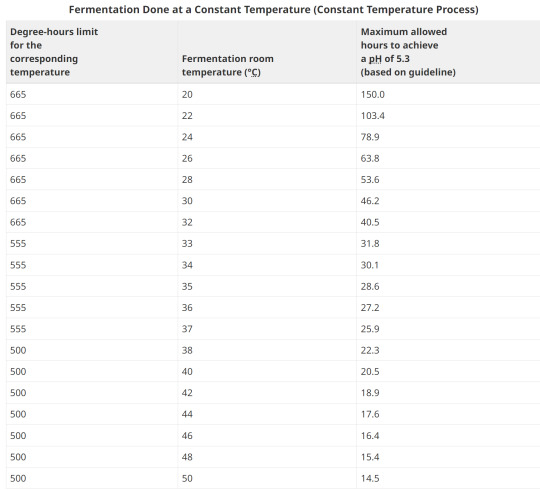
8. Examples of Degree-hours at constant room temperatures
Example 1:
Fermentation room temperature is a constant 26°C. It takes 55 hours for the pH to reach 5.3.
Degrees above 15.6°C: 26°C - 15.6°C = 10.4°C Hours to reach pH of 5.3: 55 Degree-hours calculation: (10.4°C) x (55) = 572 degree-hours
The corresponding degree-hours limit (less than 33°C) is 665 degree-hours.
Conclusion: Example 1 meets the guideline because its degree-hours are less than the limit.
Example 2:
Fermentation room temperature is a constant 35°C. It takes 40 hours for the pH to reach 5.3.
Degrees above 15.6°C: 35°C - 15.6°C = 19.4°C Hours to reach pH of 5.3: 40 Degree-hours calculation: (19.4°C) x (40) = 776 degree-hours
The corresponding degree-hours limit (between 33 and 37°C) is 555 degree-hours.
Conclusion: Example 2 does not meet the guideline because its degree-hours exceed the limit
9. Fermentation Done at Different Temperatures
When the fermentation takes place at various temperatures, each temperature step in the process is analyzed for the number of degree-hours it contributes. The degree-hours limit for the entire fermentation process is based on the highest temperature reached during fermentation.
Example 1:
It takes 35 hours for product to reach a pH of 5.3 or less. Fermentation room temperature is 24°C for the first 10 hours, 30°C for second 10 hours and 35°C for the final 15 hours.
Step 1
Degrees above 15.6°C: 24°C - 15.6°C = 8.4°C Hours to reach pH of 5.3: 10 Degree-hours calculation: (8.4°C) x (10) = 84 degree-hours
Step 2
Degrees above 15.6°C: 30°C - 15.6°C = 14.4°C Hours to reach pH of 5.3: 10 Degree-hours calculation: (14.4°C) x (10) = 144 degree-hours
Step 3
Degrees above 15.6°C: 35°C - 15.6°C = 19.4°C Hours to reach pH of 5.3: 15 Degree-hours calculation: (19.4°C) x (15) = 291 degree-hours
Degree-hours calculation for the entire fermentation process = 84 + 144 + 291 = 519
The highest temperature reached = 35°C
The corresponding degree-hour limit = 555 (between 33°C and 37°C)Conclusion: Example 1 meets the guideline because its degree-hours are less than the limit.
10. Fermentation done at Different temperatures
Example 2:
It takes 38 hours for product to reach a pH of 5.3 or less. Fermentation room temperature is 24°C for the first 10 hours, 30°C for the second 10 hours and 37°C for the final 18 hours.
Step 1
Degrees above 15.6°C: 24°C - 15.6°C = 8.4°C Hours to reach pH of 5.3: 10 Degree-hours calculation: (8.4°C) x (10) = 84 degree-hours
Step 2
Degrees above 15.6°C: 30°C - 15.6°C = 14.4°C Hours to reach pH of 5.3: 10 Degree-hours calculation: (14.4°C) x (10) = 144 degree-hours
Step 3
Degrees above 15.6°C: 37°C - 15.6°C = 21.4°C Hours to reach pH of 5.3: 18 Degree-hours calculation: (21.4°C) x (18) = 385.2 degree-hours
Degree-hours calculation for the entire fermentation process = 84 + 144 + 385.2 = 613.2
The highest temperature reached = 37°C
The corresponding degree-hour limit = 555 (between 33°C and 37°C)
Conclusion: Example 2 does not meet the guidelines because its degree-hours exceed the limit.
11. What happens if fermentation fails to hit critical limit?
What happens if the batch takes longer than degree-hours allows? For restaurant level production, it's always safer to discard the product. The toxin that Staph. Aureus produces is heat stable and cannot be cooked to deactivate. In large facilities that produce substantial batches, the operator must notify the CFIA of each case where degree-hours limits have been exceeded. Such lots must be held and samples of product submitted for microbiological laboratory examination after the drying period has been completed. Analyses should be done for Staphylococcus aureus and its enterotoxin, and for principal pathogens, such as E. coli O157:H7, Salmonella, and Clostridium botulinum and Listeria monocytogenes.
If the bacteriological evaluation proves that there are fewer than 104 Staphylococcus aureus per gram and that no enterotoxin or other pathogens are detected, then the product may be sold provided that it is labelled as requiring refrigeration.
In the case of a Staphylococcus aureus level higher than 104 per gram with no enterotoxin present the product may be used in the production of a cooked product but only if the heating process achieves full lethality applicable to the meat product.
In the case where Staphylococcus aureus enterotoxin is detected in the product the product must be destroyed.
12. E. coli and Salmonella Control in Fermented Sausages
Business' that manufacture fermented sausages are required to control for verotoxinogenic E. coli including E. coli O157:H7 and Salmonella when they make this type of product. This includes:
establishments which use beef as an ingredient in a dry or semi-dry fermented meat sausage;
establishments which store or handle uncooked beef on site;
Establishments which do not use beef and do not obtain meat ingredients from establishments which handle beef are not currently required to use one of the five options for the control of E. coli O157:H7 in dry/semi-dry fermented sausages.
Any processed RTE product containing beef or processed in a facility that also processed beef, must be subjected to a heat treatment step to control E. coli O157:H7. Heating to an internal temperature of 71°C for 15 seconds or other treatment to achieve a 5D reduction is necessary. This is a CFIA requirement and is not negotiable.
Uncooked air dried products produced as RTE, must meet shelf stable requirements as detailed for Fermented-Dry products.
13. Options for E. coli validation
Without lab testing, the two main methods of validation are with heat treating by either low temp and a long duration, or various hotter processing temperatures for a shorter timeframe.
A challenge study to validate a process can take 1 year and over $100,000!
14. Option1; Heating
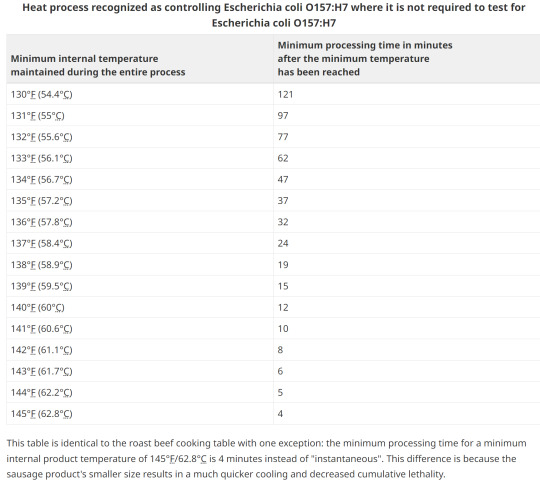
15. Option 2; pH, heating, holding, diameter
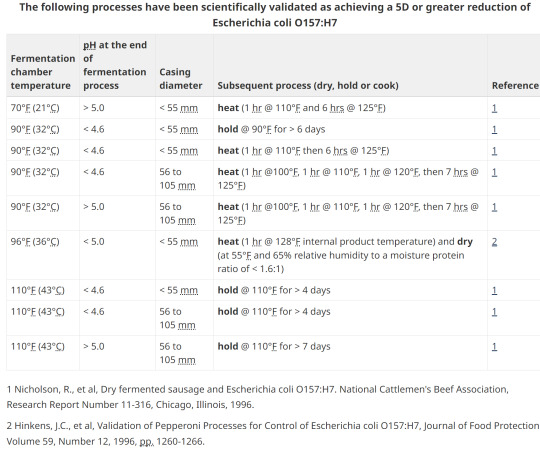
16. Safety and consistency
The aw and pH values are critical in the control of pathogens as well as to ensure shelf-stability in all semi-dry and dry fermented meat products. Each batch must be tested for aw and/or pH in order to verify that the critical limits are met.
Although aw measurement is mandatory only for shelf stable products, it is strongly recommended that the producer determine the aw values achieved for each product type they manufacture and for each product. Once this has been established, frequent regular checks should be made to ensure consistency. In the U.S., they rely on moisture to protein ratio and have set targets. This lab-tested value is a direct correlation of the % water to % meat protein and not aw. This gives more consistency to common names. For example, to legally call a product "jerky" it must have a MPR of 0.75:1 or lower. Remember your ABCs:
Always be compliant.
-AND-
Documentation or it didn't happen.
(tags)
Charcuterie,Fermented Meat,Food Safety,Starter Culture,Chemical Acidification,Water Activity,Fermentation Process,Degree-Hours Method,Foodborne Pathogens,Meat Processing Guidelines,Chef WK Alberta Canada,Food Industry Standards,pH Critical Limits,Thermal Processing,Food Preservation,Food Microbiology,Sausage Fermentation,Charcuterie Expertise,Fermented Meats ,Food Safety Standards,Food Processing Guidelines,Starter Cultures,Chemical Acidification,Water Activity (a_w),Critical Limits,Degree-Hours Method,Foodborne Pathogens,Meat Processing Equipment,Processing Facility Requirements,Hazard Analysis and Critical Control Points (HACCP),Food Preservation Techniques,Temperature Control,Pathogen Reduction,Food Industry Compliance,Documentation Practices,Heat Treatment,pH Control,Food Stability,Consistency in Production,Microbial Testing,Real-time Monitoring,Process Validation,Regulatory Requirements,Verotoxigenic E. coli,Lethality Standards,Product Labelling,Spoilage Prevention,Enterotoxin Detection,Shelf-Stable Products,Moisture to Protein Ratio (MPR)
#Charcuterie#Fermented Meat#Food Safety#Starter Culture#Chemical Acidification#Water Activity#Fermentation Process#Degree-Hours#Meat Processing Guidelines#Thermal Processing#Food Preservation#Food Microbiology#Sausage Fermentation#Starter Cultures#Critical Limits#Meat Processing#Food Preservation Techniques#Temperature Control#Pathogen Reduction#Food Industry#Heat Treatment#pH Control#Food Stability#Microbial Testing#Real-time Monitoring#Process Validation#Spoilage Prevention#Enterotoxin Detection#Shelf-Stable Products#Moisture to Protein Ratio (MPR)
3 notes
·
View notes